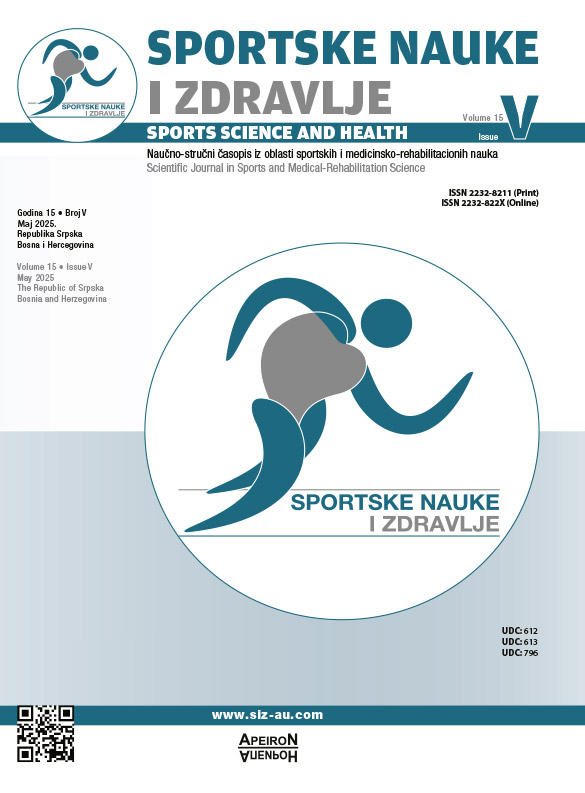Comparative analysis of heart rate variability in short-distance and ultramarathon runners: implications for training optimization
DOI:
https://doi.org/10.7251/SSH25V022NKeywords:
heart rate variability, athletes, short-distance runners, long-distance runners, adaptation to physical exerciseAbstract
This study investigated heart rate variability (HRV) as a biomarker for assessing athletes’ functional states and adaptation mechanisms to different training modalities. The objective was to develop a technology for monitoring and controlling the training process of runners using HRV indicators. Thirty participants were divided into two groups: Group 1 consisted of short-distance runners, and Group 2 included long-distance runners. HRV was assessed via electrocardiography using the “Variсard” system, while additional data were gathered through a Google Forms survey. Statistical analysis was conducted using SPSS software (version 13.0).
Results revealed minimal differences in heart rate between the two groups, with the resting heart rate being lower in long-distance runners. The low-frequency component (%LF) exhibited a more pronounced response to the orthostatic test in short-distance runners (p<0.05). Regression analysis demonstrated that factors such as age, alcohol consumption, and smoking led to an increase in LF% and a decrease in parasympathetic activity.
HRV effectively reflects the adaptive capacity of runners and can be employed to monitor and control training processes. Non-training factors, including nutrition, health status, perceived load tolerance, age, and gender, also influence HRV and must be considered when preparing runners. These findings highlight the critical role of HRV in optimizing athletic performance and tailoring individualized training strategies for short- and long-distance runners.
